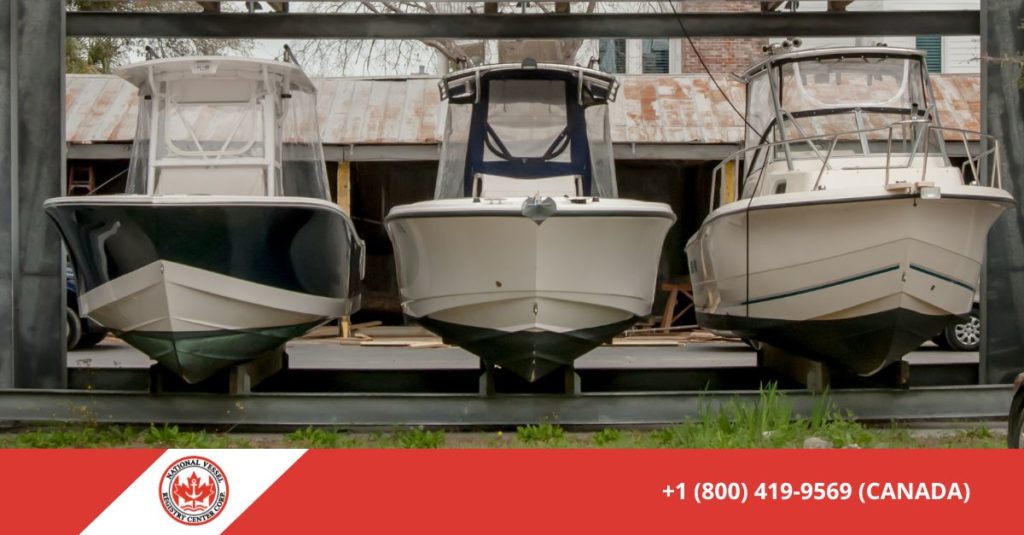When you register your vessel through the Canadian maritime system, proper display of your boat name and port of registry becomes a legal requirement that ensures your vessel’s identification and compliance with federal regulations. The marking requirements specify where, how, and in what format you must display your vessel’s name and Port of Registry on the hull, making your boat easily identifiable to marine authorities and other boaters.

Knowing these requirements protects you from potential fines and ensures your vessel meets all federal standards. We provide the necessary forms and streamline the process to help you meet these obligations efficiently and correctly.
Essential Marking Requirements for Your Vessel
Your vessel must display specific markings that identify it within the Canadian maritime registry system. These markings serve multiple purposes: they help marine authorities verify your registration status, assist in search and rescue operations, and ensure compliance with Canadian maritime laws.
The primary markings include your vessel’s official name and hailing port, which together create a unique identifier for your boat. Your Port of Registry represents the location where your vessel is registered, not necessarily where you dock or operate it most frequently.
Vessel Name Display Standards
Your vessel’s name must appear on both sides of the bow or both sides of the stern. The letters must be clearly visible from a reasonable distance and contrast sharply with the hull color. Dark letters on light hulls or light letters on dark hulls ensure maximum visibility.
The name should use block letters or a similar easily readable font style. Script or decorative fonts that reduce readability are discouraged and may not meet inspection standards. We help you understand these specifications through our comprehensive forms that outline acceptable marking practices.
Port of Registry Requirements
Your Port of Registry must appear below or near your vessel’s name on the stern. This marking identifies where your boat name and port of registry are officially recorded within the Canadian system. The Port of Registry uses the same visibility and contrast requirements as your vessel name.
For vessels registered through the Small Vessel Registry, the Port of Registry format follows specific conventions that we detail in our registration forms. Our streamlined process ensures you understand exactly how to format this information correctly.
Size and Placement Specifications
The size requirements for your vessel markings depend on your boat’s length and type. Larger vessels require proportionally larger letters to ensure visibility from appropriate distances. These specifications exist for safety reasons and regulatory compliance.
Letter height minimums vary based on vessel size, with specific measurements outlined in federal regulations. Our forms include detailed charts that help you determine the correct letter size for your specific vessel dimensions.
changing a boat name
Measuring Letter Heights
Letter height measurements refer to capital letters in your vessel’s name. If your name contains only lowercase letters, you measure based on what the capital letter height would be in the same font. This standardization ensures consistency across all registered vessels.
The measurement includes the full height of letters like “B” or “P” but excludes any decorative elements above or below the standard letter form. Our documentation provides clear examples to help you measure correctly.
Positioning Guidelines
Your vessel’s name and Port of Registry must be positioned where they remain visible under normal operating conditions. Avoid placing markings where fenders, equipment, or other boat features might obstruct the view. Marine authorities must be able to read your boat name and port of registry from a reasonable distance.
The stern location for Port of Registry markings ensures visibility from behind, which is particularly important during inspections and emergency situations. Side-mounted vessel names provide identification from port and starboard approaches.
Color and Contrast Requirements
Proper contrast between your markings and hull color is essential for compliance and safety. The markings must be clearly readable in various lighting conditions and weather situations. Poor contrast can result in citations and create safety concerns during emergency situations.
Acceptable Color Combinations
Light-colored hulls should display dark markings using colors like black, dark blue, or dark green. Dark hulls require light markings such as white, yellow, or light gray. Metallic or reflective paints can enhance visibility but must still maintain clear contrast with the underlying hull color.
Avoid using colors that might fade quickly or become difficult to read over time. Our forms include color recommendations that help ensure long-lasting, compliant markings that maintain their visibility throughout your vessel’s registration period.
Maintenance Considerations
Your markings must remain clearly visible throughout your registration period. Faded, chipped, or damaged letters may not meet compliance standards and could result in citations. Regular maintenance ensures your boat name and port of registry remain properly displayed.
Weather exposure, UV radiation, and normal wear can degrade marking visibility over time. Planning for periodic touch-ups or complete remarking keeps your vessel compliant and professionally presented.
Documentation and Form Requirements
When completing your Canadian boat registration, proper documentation of your intended markings helps ensure compliance from the start. We provide comprehensive forms that guide you through the marking specification process, making it easier to understand and implement the requirements correctly.
Our forms include detailed sections for recording your chosen vessel name, Port of Registry selection, and marking specifications. This documentation becomes part of your official registration record and helps marine authorities verify compliance during inspections.
Name Selection Guidelines
Your chosen vessel name must meet specific criteria outlined in federal regulations. Names cannot duplicate existing registered vessels in your area, and certain words or phrases may be restricted or prohibited. Our forms include guidance on acceptable naming practices.
The name selection process also considers length limitations, as very long names may present marking challenges on smaller vessels. We help you understand these practical considerations through our comprehensive registration forms.
Port Selection Process
Your Port of Registry selection affects how your boat name and port of registry appear on your vessel and in official records. This choice has administrative implications and may affect certain regulatory requirements or fees.
We provide detailed information about Port of Registry options and their implications through our registration forms. This guidance helps you make informed decisions that align with your operational needs and regulatory requirements.
Updating Your Vessel Markings
Changes to your vessel name or Port of Registry require updating both your registration documents and physical markings. These changes must be processed through official channels to maintain registration validity and legal compliance.
Our forms streamline the update process, providing clear instructions for documenting changes and ensuring all requirements are met. Whether you’re changing your vessel name or transferring to a different port of registry, we make the process straightforward and compliant.
Name Change Procedures
Vessel name changes require approval through the appropriate registry system before you can update your physical markings. The approval process ensures your new name meets all regulatory requirements and doesn’t conflict with existing registrations.
Once approved, you must update your hull markings within specified timeframes. Our forms detail these requirements and help you plan the transition to avoid any compliance gaps.
Port Transfer Requirements
Transferring your registration to a different Port of Registry involves updating both documentation and hull markings. This process may affect your registration fees and regulatory obligations depending on the new location.
We provide comprehensive forms that guide you through port transfer requirements, ensuring you understand all implications and complete the process correctly. Our streamlined approach makes these administrative changes more manageable.
Working with Professional Services
While vessel marking is often a do-it-yourself project, understanding the requirements thoroughly prevents costly mistakes and compliance issues. Professional marine services can apply markings that meet all specifications while providing a polished, professional appearance.
We focus on providing the forms and information you need to navigate the registration and marking process successfully. Our role centers on making the administrative aspects clearer and more accessible, helping you understand requirements and complete necessary documentation efficiently.
Through our comprehensive forms and guidance, vessel owners can confidently approach the marking requirements knowing they have access to current, accurate information that supports compliance and successful registration outcomes.

